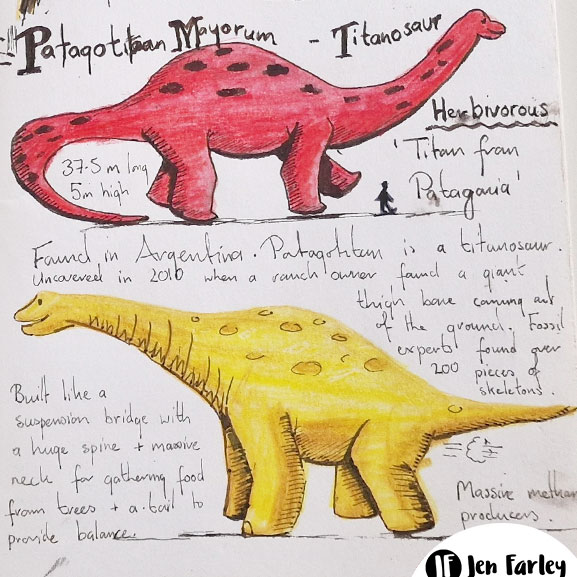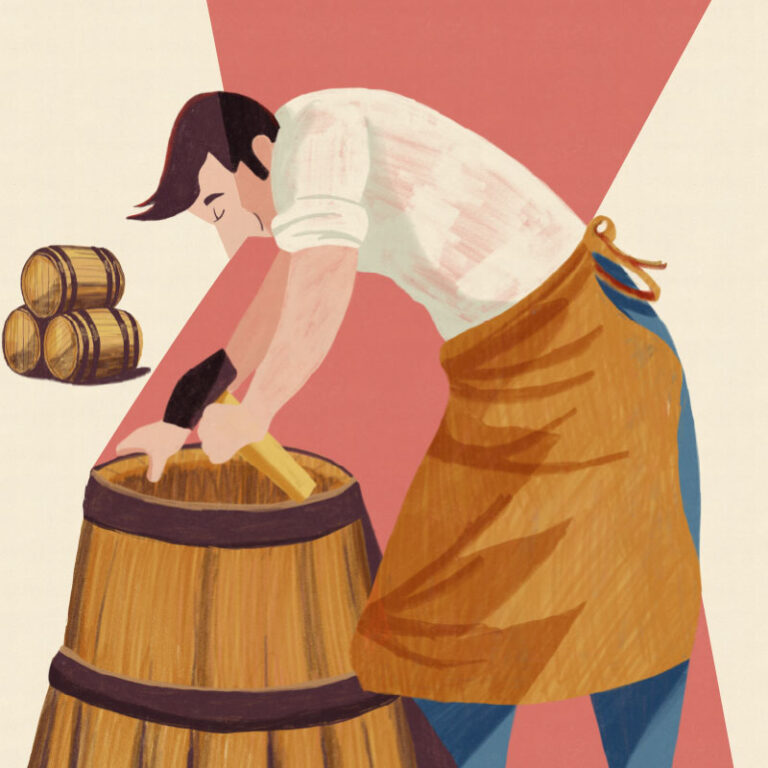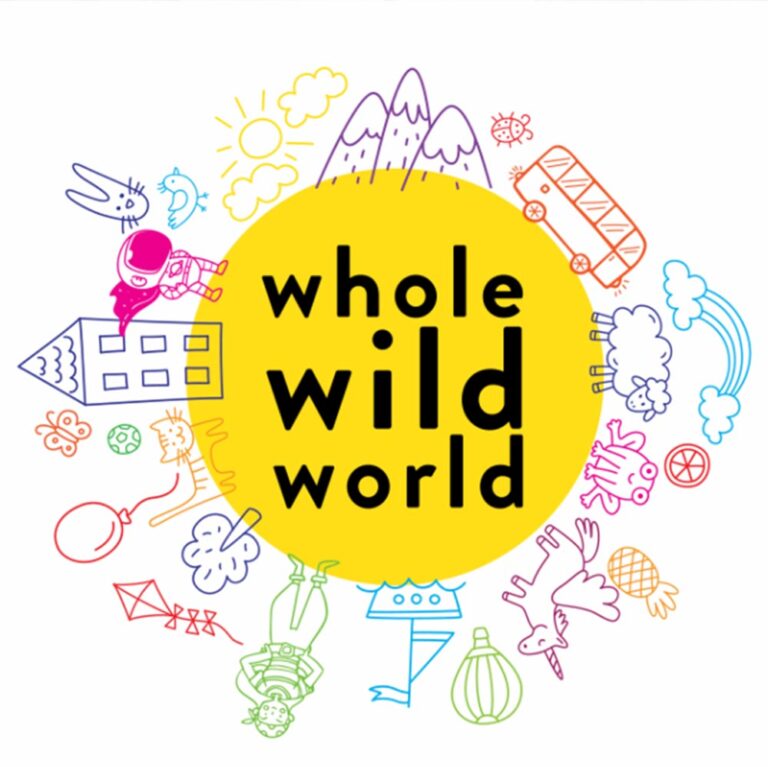In December last year, I was in London with my husband. We spent a few lovely hours drawing at one of the finest museums on the planet. These images are from a small Natural History Museum London Sketchbook I made. The museum is awe-inspiring, both as a building and for the wonders of the natural world it houses.
Natural History Museum Sketchbook
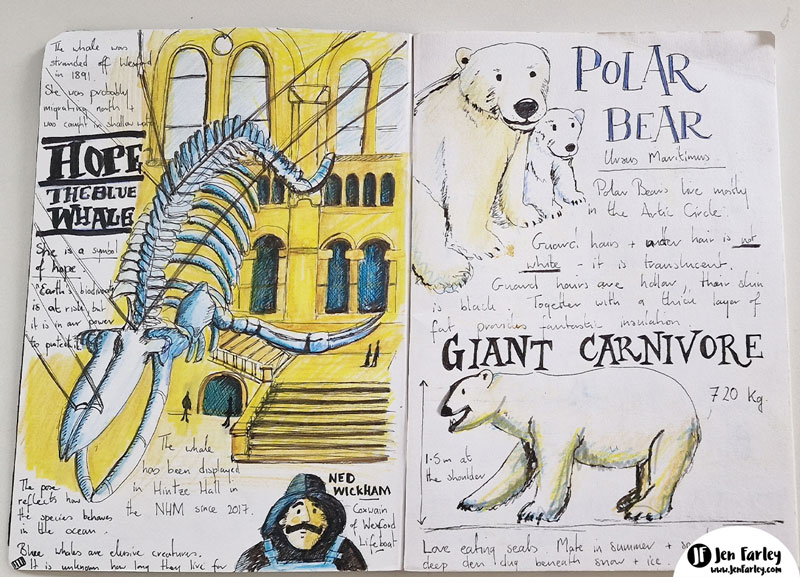
One of the first things you see as you enter the main hall is the MASSIVE skeleton of Hope, the blue whale. It hangs from the ceiling and is truly an amazing sight. The whale was stranded off Wexford in Ireland in 1891. It’s thought she was migrating north and got stuck in shallow waters. It’s not a happy ending. The poor creature was left floundering for two days on a sandbar. The coxswain from the Wexford lifeboat, a man called Ned Wickham made a harpoon and killed her, putting her out of her misery.
On a side note, I illustrated a chart of whales that is available as an art print in my shop.
The museum’s polar bear exhibit caught my eye too, and I filled a few pages with quick sketches. It’s always handy to have non-moving models while drawing their imposing forms. Polar bears are really cool (pun intended) and these Arctic creatures are spectacular, even as stuffed species.

Sitting on the stairs at the end of the hall is the statue of Charles Darwin. It’s an iconic spot – it feels like the perfect welcome to the museum, a reminder of how far our understanding of the natural world has come. There’s a great quote from Darwin with the statue:
“Freedom of thought is best promoted by the gradual illuminations of man’s minds, which follows the advance of Science.”
The darker side of human impact on the natural world came to mind as I sketched the Great Auk, a species driven to extinction in the 19th century. That led me to sketch a dodo as well, another reminder of how fragile the natural world can be when we don’t respect it. In the museum, there’s a lot of information about how the Dodo probably DIDN’T look like this, along with a new artist and scientist impression of what the Dodo probably did look like.
Dinosaurs!
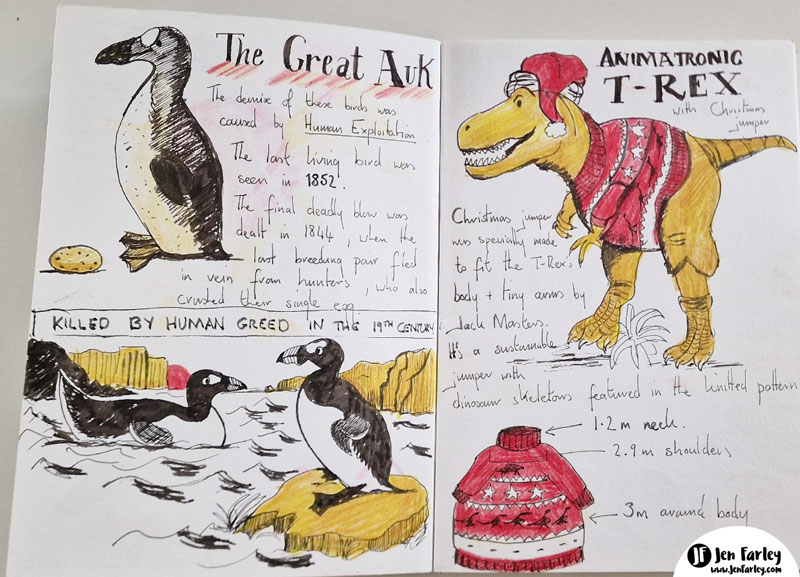
The dinosaur gallery is a fantastic spot for sketching. Before you go into the huge animatronic T-Rex section, there’s a warning that it could be frightening for little kids. I braced myself. As it was nearing Christmas, the T-Rex was wearing an ugly Christmas jumper, but it was still a little bit scary.
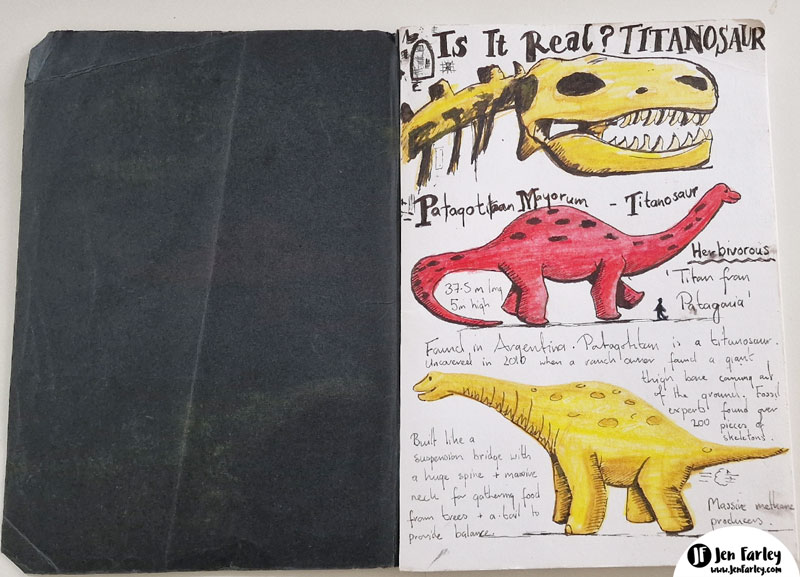
I’ve always loved the famous graphic poster created by Edward McKnight Kauffer for the Natural History Museum. It’s a design classic, and as a graphic artist, it was a good opportunity to make a quick copy in ink.
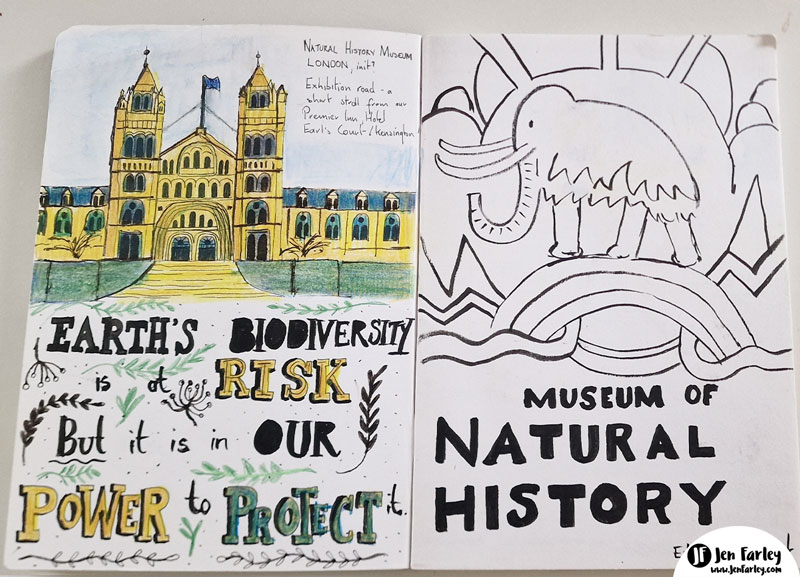
I also found inspiration in the museum’s collection of works by John James Audubon. His illustrations of birds are legendary, and I sketched some of his famous subjects, like the flamingo, Carolina Parakeet, Louisiana Heron, and the Atlantic puffin. These birds are so full of character, and it was fun to study them up close through his eyes—and then through mine.

What I love about sketching in the museum is that it gives me the chance to slow down and look at things closely. It’s easy to rush past an exhibit, but when you sit down and draw, you get to know it in a way that you wouldn’t just by looking. Plus, I love the museum’s atmosphere. There is always a sense of awe and a buzz of excitement.
I left with a sketchbook full of ideas, a fresh dose of inspiration, and a reminder of how much I love combining art, history, and science. If you’re ever in London with a sketchbook, I highly recommend spending a few hours (or a whole day!) at the Natural History Museum. There’s always something new to discover.
Speaking of museums, you might be interested in the Museum Journal for kids.
It’s an illustrated journal for kids to fill out when they visit museums, large and small.
Read more about “My Very Own Museum Journal” here.

